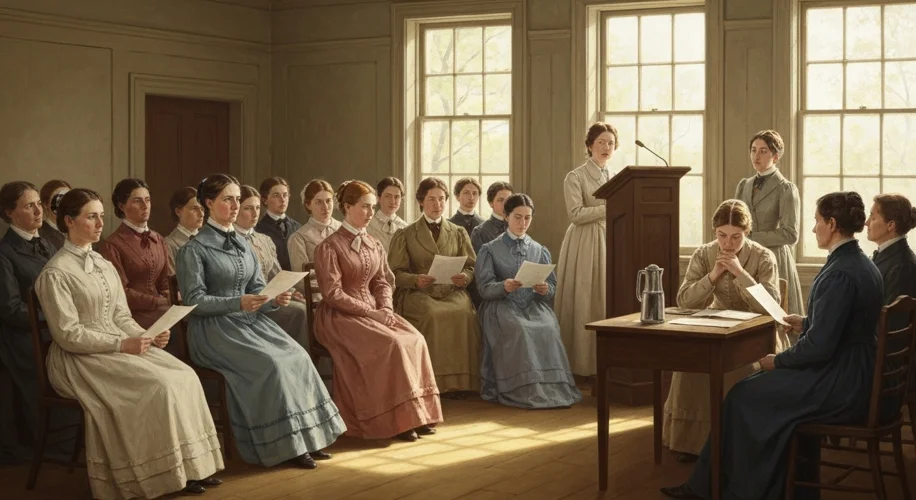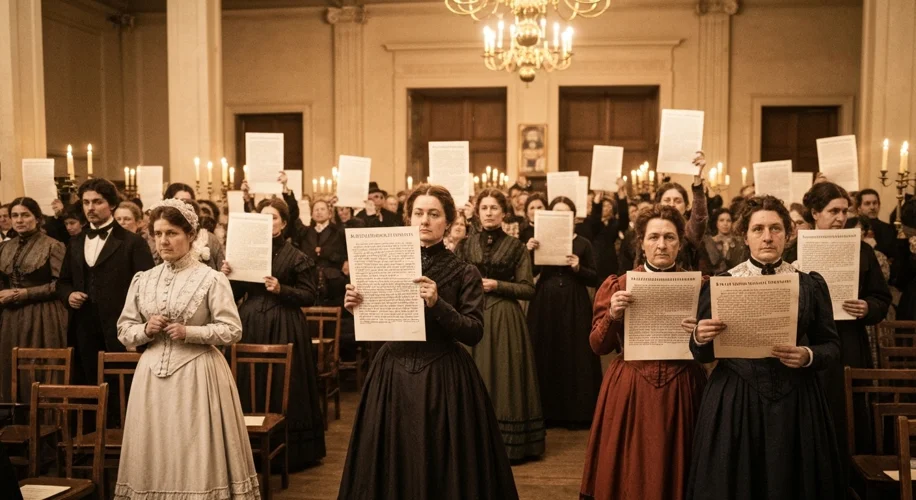The year is 1848. A sweltering July in Seneca Falls, New York, but the heat inside the Wesleyan Chapel was not just from the weather; it was the simmering discontent of women who had long been denied a voice.
For centuries, women in America had navigated a world where their legal, social, and economic existence was largely dictated by men. Married women, in particular, had no independent legal identity. Their property, their wages, even their children, belonged to their husbands. Divorce was a grueling, often impossible, process, and women had virtually no say in public life, unable to vote, hold office, or even speak at public gatherings without censure. This was the backdrop against which a small group of determined individuals gathered.
The seeds of the Seneca Falls Convention were sown by five women: Elizabeth Cady Stanton, a brilliant legal mind frustrated by her inability to practice law; Lucretia Mott, a respected Quaker minister and abolitionist who had faced similar disenfranchisement; Mary M’Clintock, a devoted mother and organizer; Martha Coffin Wright, a staunch advocate for abolition and women’s rights; and Jane Hunt, another activist from a prominent Quaker family.
These women, drawn together by their shared opposition to slavery and their growing awareness of the systemic inequalities faced by women, decided it was time to formally address their grievances. They planned the convention, sending out handbills and advertisements, calling for a “meeting to discuss the social, civil, and religious condition and rights of Woman.”

The convention, held over two days, July 19th and 20th, drew an astonishing crowd of around 300 people – men included, though their presence was often met with a mixture of curiosity and suspicion. The air buzzed with anticipation as the attendees delved into the injustices that plagued women’s lives. At the heart of their deliberations was a document that would echo through history: the Declaration of Sentiments.
Modeled, controversially at the time, on the Declaration of Independence, the Declaration of Sentiments boldly proclaimed, “We hold these truths to be self-evident: that all men and women are created equal.” It then meticulously listed the grievances of women, mirroring the colonies’ complaints against King George III. “He has never permitted her to exercise her inalienable right to the elective franchise,” one article declared, referring to the lack of suffrage. “He has monopolized for himself professions of divinity, physic, and law, as her esteemed fellow creatures are regarded as inferior,” it continued, highlighting the barriers to education and employment. The document boldly asserted women’s right to property, to wages, to divorce, to custody of their children, and most controversially, to “all the rights and privileges which belong to them as citizens of the United States.”
Of the resolutions presented, one stood out, generating significant debate even among the convention’s supporters: the demand for women’s suffrage, the right to vote. Frederick Douglass, a prominent abolitionist and the only African American man to speak at the convention, passionately argued for its inclusion, recognizing that without the vote, all other rights were precarious. His powerful advocacy, coupled with Stanton’s unwavering conviction, ultimately swayed the assembly, and the resolution was adopted.
The Seneca Falls Convention was not an isolated incident, but rather the thunderclap that heralded a new era. While it did not immediately dismantle the structures of oppression, it provided a rallying point and a clear articulation of the goals for a nascent movement. The Declaration of Sentiments became a foundational text, inspiring countless women and men to join the fight for equality.
In the decades that followed, conventions were held across the country, building momentum. Women organized, petitioned, lectured, and, in many cases, were arrested and imprisoned for daring to speak out. The fight for suffrage, in particular, would continue for another 72 years until the passage of the 19th Amendment in 1920, finally granting women the right to vote.
The legacy of Seneca Falls is profound. It was the first time women collectively declared their intention to be full and equal citizens. It was a testament to the power of organized action and the courage of those who dared to challenge the status quo. The women who gathered in that small chapel in upstate New York in 1848 did more than just meet; they lit a fire that would blaze across generations, fundamentally reshaping the landscape of rights and equality in America and beyond.

